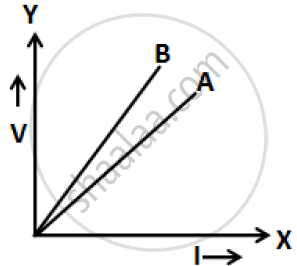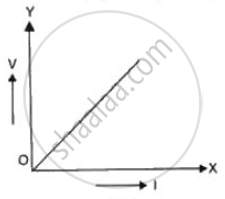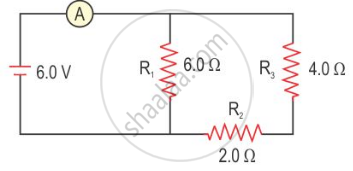Advertisements
Advertisements
प्रश्न
The V-I graph for a series combination and for a parallel combination of two resistors is shown in the figure below. Which of the two A or B. represents the parallel combination? Give reasons for your answer.

उत्तर १
For the same change in I, change in V is less for the straight line A than for the straight line B (i.e. the straight line A is less steeper than B). The straight line A represents small resistance, while the straight line B represents more resistance. The equivalent resistance is less in a parallel combination than in a series combination. So, line A represents a parallel combination.
उत्तर २
‘A’ shows parallel combination because in case of parallel combination, the resistance is less for their potential is less, currents is more.
संबंधित प्रश्न
Judge the equivalent resistance when the following are connected in parallel − (a) 1 Ω and 106Ω, (b) 1 Ω and 103Ω and 106Ω.
Name a substance of which the resistance remains almost unchanged by the increase in temperature.
A graph is plotted taking p.d. along y-axis and electric current along x-axis. Name the physical quantity that represents the slope of this graph (Fig.).

Three resistors of 6.0 Ω, 2.0 Ω and 4.0 Ω are joined to an ammeter A and a cell of emf 6.0 V as shown in the following figure. Calculate :
- the effective resistance of the circuit.
- the reading of ammeter.

To increase the effective resistance in a circuit, the resistors are connected in _______________ .
A given metallic wire of resistance R is doubled on itself. What will be its new resistance?
State expression for Resistance connected in parallel.
Calculate the equivalent resistance between the points A and B for the following combination of resistors:
